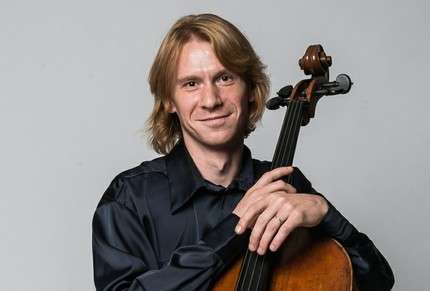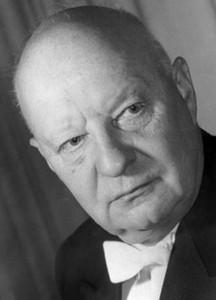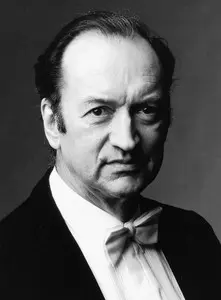
Isaac Stern |
Isaac Stern

Stern is an outstanding artist-musician. The violin for him is a means of communication with people. Perfect possession of all the resources of the instrument is a happy opportunity to convey the subtlest psychological nuances, thoughts, feelings and moods – everything that a person’s spiritual life is rich in.
Isaac Stern was born on July 21, 1920 in Ukraine, in the city of Kremenets-on-Volyn. Already in infancy, he ended up with his parents in the United States. “I was about seven years old when a neighbor boy, my friend, had already started playing the violin. It inspired me too. Now this person serves in the insurance system, and I am a violinist, ”recalled Stern.
Isaac first learned to play the piano under the guidance of his mother, and then studied violin at the San Francisco Conservatory in the class of the famous teacher N. Blinder. The young man developed normally, gradually, by no means like a child prodigy, although he made his debut with the orchestra at the age of 11, playing a double Bach concerto with his teacher.
Much later, he answered the question of what factors played a decisive role in his creative development:
“In the first place I would put my teacher Naum Blinder. He never told me how to play, he only told me how not to, and therefore forced me to independently look for the appropriate means of expression and techniques. Of course, many others believed in me and supported me. I gave my first independent concert at the age of fifteen in San Francisco and hardly looked like a child prodigy. It was good. I played the Ernst Concerto – incredibly difficult, and therefore have never performed it since.
In San Francisco, Stern was talked about as a new rising star in the violin firmament. Fame in the city opened the way for him to New York, and on October 11, 1937, Stern made his debut in the hall of Town Hall. However, the concert did not become a sensation.
“My New York debut in 1937 was not brilliant, almost a disaster. I think I played well, but the critics were unfriendly. In short, I jumped on some intercity bus and drove for five hours from Manhattan to the last stop, without getting off, pondering the dilemma of whether to continue or refuse. A year later, he appeared there again on the stage and did not play so well, but the criticism accepted me with enthusiasm.
Against the backdrop of the brilliant masters of America, Stern was losing at that time and could not yet compete with Heifetz, Menuhin and other “violin kings”. Isaac returns to San Francisco, where he continues to work with the advice of Louis Persinger, a former Menuhin teacher. The war interrupts his studies. He makes numerous trips to US military bases in the Pacific and gives concerts with the troops.
“Numerous concert performances that continued during the years of the Second World War,” writes V Rudenko, “helped the seeking artist find himself, find his own“ voice ”, a manner of sincere, direct emotional expression. The sensation was his second New York concert at Carnegie Hall (1943), after which they started talking about Stern as one of the outstanding violinists of the world.
Stern is besieged by the impresario, he develops a grandiose concert activity, giving up to 90 concerts a year.
The decisive influence on the formation of Stern as an artist was his communication with the outstanding Spanish cellist Casals. In 1950, the violinist first came to the Pablo Casals festival in the city of Prades in southern France. The meeting with Casals turned all the ideas of the young musician upside down. Later, he admitted that none of the violinists had such an impact on him.
“Casals confirmed a lot of what I vaguely felt and always aspired to,” says Stern. — My main motto is a violin for music, not music for a violin. To realize this motto, it is necessary to overcome the barriers of interpretation. And for Casals they don’t exist. His example proves that, even going beyond the established boundaries of taste, it is not necessary to drown in the freedom of expression. Everything that Casals gave me was general, not specific. You can’t imitate a great artist, but you can learn from him how to approach performance.”
Later, Prada Stern participated in 4 festivals.
The heyday of Stern’s performance dates back to the 1950s. Then listeners from various countries and continents got acquainted with his art. So, in 1953, the violinist made a tour that covered almost the whole world: Scotland, Honolulu, Japan, the Philippines, Hong Kong, Calcutta, Bombay, Israel, Italy, Switzerland, England. The journey was completed on 20 December 1953 in London with a performance with the Royal Orchestra.
“Like every concert player, in his endless wanderings with Stern, funny stories or adventures happened more than once,” writes LN Raaben. So, during a performance in Miami Beach in 1958, he discovered an unwanted admirer who was present at the concert. It was a noisy cricket that interfered with the performance of the Brahms concerto. Having played the first phrase, the violinist turned to the audience and said: “When I signed the contract, I thought that I would be the only soloist in this concert, but, apparently, I had a rival.” With these words, Stern pointed to three potted palm trees on the stage. Immediately three attendants appeared and listened attentively to the palm trees. Nothing! Not inspired by music, the cricket fell silent. But as soon as the artist resumed the game, the duet with the cricket resumed immediately. I had to evacuate the uninvited “executor”. The palms were taken out, and Stern calmly ended the concert, as always to thunderous applause.
In 1955, Stern married a former UN employee. Their daughter was born the following year. Vera Stern often accompanies her husband on his tours.
Reviewers did not endow Stern with many qualities: “subtle artistry, emotionality combined with noble restraint of refined taste, phenomenal mastery of the bow. Evenness, lightness, “infinity” of the bow, an unlimited range of sounds, magnificent, masculine chords, and finally, an incalculable wealth of wonderful strokes, from wide detache to spectacular staccato, are striking in his playing. Striking is Stern’s skill in diversifying the tone of the instrument. He knows how to find a unique sound not only for compositions of different eras and authors, and within the same work, the sound of his violin “reincarnates” beyond recognition.”
Stern is primarily a lyricist, but his playing was no stranger to drama. He impressed with the range of performance creativity, equally beautiful in the subtle elegance of Mozart’s interpretation, in the pathetic “Gothic” of Bach and in the dramatic collisions of Brahms.
“I love the music of different countries,” he says, “classics, because it is great and universal, modern authors, because they say something to me and to our time, I also love the so-called “hackneyed” works, like Mendelssohn’s concertos and Tchaikovsky.
V. Rudenko writes:
“The amazing ability of creative transformation makes it possible for Stern the artist not only to “depict” style, but to think figuratively in it, not to “show” feelings, but to express full-blooded genuine experiences in music. This is the secret of the artist’s modernity, in whose performing style the art of performance and the art of artistic experience seem to have merged. The organic feeling of instrumental specificity, the nature of the violin and the spirit of free poetic improvisation arising on this basis allow the musician to completely surrender to the flight of fantasy. It always captivates, captivates the audience, gives rise to that special excitement, creative involvement of the public and the artist, which reign at I. Stern’s concerts.
Even outwardly, Stern’s game was exceptionally harmonious: no abrupt movements, no angularity, and no “twitchy” transitions. One could admire the violinist’s right hand. The “grip” of the bow is calm and confident, with a peculiar manner of holding the bow. It is based on active movements of the forearm and economical use of the shoulder.
“Musical images reflect in his interpretation an almost tangible sculptural relief,” writes Fikhtengolts, “but sometimes also a romantic fluctuation, an elusive richness of shades, “plays” of intonations. It would seem that such a characterization takes Stern away from modernity and from that “special” that is characteristic of it and that did not exist in the past. The “openness” of emotions, the immediacy of their transmission, the absence of irony and skepticism were rather characteristic of the bygone generation of romantic violinists, who still brought the breath of the XNUMXth century to us. However, this is not so: “Stern’s art has an eminent sense of modernity. For him, music is a living language of passions, which does not prevent that uniformity from reigning in this art, which Heine wrote about – the uniformity that exists “between enthusiasm and artistic completeness.”
In 1956, Stern first came to the USSR. Then the artist visited our country several more times. K. Ogievsky vividly spoke about the maestro’s tour in Russia in 1992:
“Isaac Stern is excellent! A quarter of a century has passed since his last tour in our country. Now the maestro is more than seventy, and the violin in his enchanting hands still sings as young, caressing the ear with the sophistication of sound. The dynamic patterns of his works amaze with their elegance and scale, the contrast of nuances and the magical “flying” of the sound, which freely penetrates even into the “deaf” corners of concert halls.
His technique is still flawless. For example, “beaded” figurations in Mozart’s Concerto (G-dur) or grandiose passages of Beethoven’s Concerto Stern performs with impeccable purity and filigree brilliance, and the coordination of his hand movements can only be envied. The inimitable right hand of the maestro, whose special flexibility allows to maintain the integrity of the sound line when changing the bow and changing strings, is still accurate and confident. I remember that the fantastic inconspicuousness of Stern’s “shifts”, which aroused the delight of professionals already during his past visits, made teachers not only of music schools and colleges, but also of the Moscow Conservatory, redouble their attention to this most complex element of violin technique.
But the most amazing and, it would seem, incredible is the state of Stern’s vibrato. As you know, violin vibration is a delicate matter, reminiscent of a miraculous seasoning added by the performer to “musical dishes” to his liking. It’s no secret that violinists, like vocalists, often experience irreversible changes in the quality of their vibrato in the years close to the end of their concert activity. It becomes poorly controlled, its amplitude involuntarily increases, the frequency decreases. The left hand of the violinist, like the vocal cords of the singers, begins to lose elasticity and ceases to obey the aesthetic “I” of the artist. The vibration seems to be standardized, loses its liveliness, and the listener feels the monotony of the sound. If you believe that a beautiful vibration is bestowed by God, it turns out that over time, the Almighty is pleased to take back his gifts. Fortunately, all this has nothing to do with the game of the famous guest performer: God’s gift remains with him. Moreover, it seems that Stern’s sound is blossoming. Listening to this game, you remember the legend of a fabulous drink, the taste of which is so pleasant, the smell is so fragrant and the taste is so sweet that you want to drink more and more, and the thirst only intensifies.
Those who have heard Stern in past years (the author of these lines was lucky enough to attend all of his Moscow concerts) do not sin before the truth when they speak of the powerful development of Stern’s talent. His game, generously fanned with the charm of personality and unparalleled sincerity, his sound, as if woven from spiritual awe, act hypnotically.
And the listener receives an amazing charge of spiritual energy, healing injections of true nobility, experiences the phenomenon of participation in the creative process, the joy of being.
The musician has acted in films twice. The first time he played the role of a ghost in John Garfeld’s film “Humoresque”, the second time – the role of Eugene Ysaye in the film “Today we sing” (1952) about the famous American impresario Yurok.
Stern is distinguished by ease of dealing with people, kindness and responsiveness. A big fan of baseball, he follows the news in sports as jealously as he does the latest in music. Not being able to watch the game of his favorite team, he asks to immediately report the result, even at concerts.
“I never forget one thing: there is no performer who is higher than music,” says the maestro. – It always contains more opportunities than the most gifted artists. That is why it happens that five virtuosos can interpret the same page of music in completely different ways – and they all turn out to be artistically equal. There are times when you feel a tangible joy that you have done something: it is a great admiration for music. To test it, the performer must conserve his strength, not overspend it in endless performances.





